“Loop” Review: What I Thought of the Milkman Model Platform’s First Delivery Round
Here are my initial thoughts on Loop's first round.
Updated May 31 2019, 6:17 p.m. ET
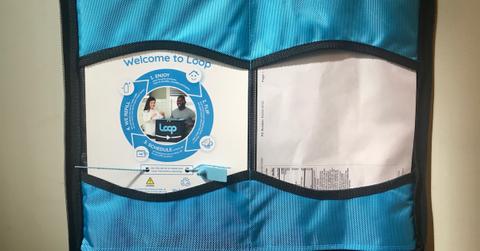
Amongst the pile of Amazon boxes and plastic envelopes cluttering my apartment building’s lobby on Wednesday night, May 29, was a package I know my neighbors have never seen before: the reusable Loop tote. I was one of the lucky few thousand people in the northeastern U.S. to score a first-round membership to Loop, the circular online shopping platform that recycling experts TerraCycle launched on May 21. And now that I've experienced a Loop order for myself, I have a lot of thoughts. So if you’re wondering if Loop is worth participating in — and paying for — read on for my detailed review.
Earlier this month, I interviewed Loop's VP of Global Business Development, Tony Rossi, who had me extremely excited to try out Loop. As soon as I received the email that I’d been approved for a membership last week, I eagerly signed up and spent 20 minutes carefully filling my cart with grocery items that would be delivered in returnable containers, that I can send back for Loop to sanitize and refill for other customers. And while Rossi warned me that Loop’s “prices might be a premium versus the on-shelf equivalent,” my jaw dropped when the total for four pantry items came to nearly $85. That total included shipping, which was a whopping $20, as well as the refundable deposits on the Loop tote and each of the reusable containers.
I added a few more random items to my cart to see how that affected shipping, and that actually helped shipping go down to $15. (Essentially, Loop rewards customers who buy more items with cheaper shipping.) But still, I closed the tab, because despite my enthusiasm for Loop, I was shocked to see such premium pricing, which would exclude many potential customers who do not have the privilege to pay for overpriced, zero-waste groceries.
So when Loop sent out an email a few days later announcing free shipping for Memorial Day Weekend, I instantly placed an order— though I had to push my usual grocery thriftiness aside. (As a disclaimer, I paid for this entire Loop order with my own money.)
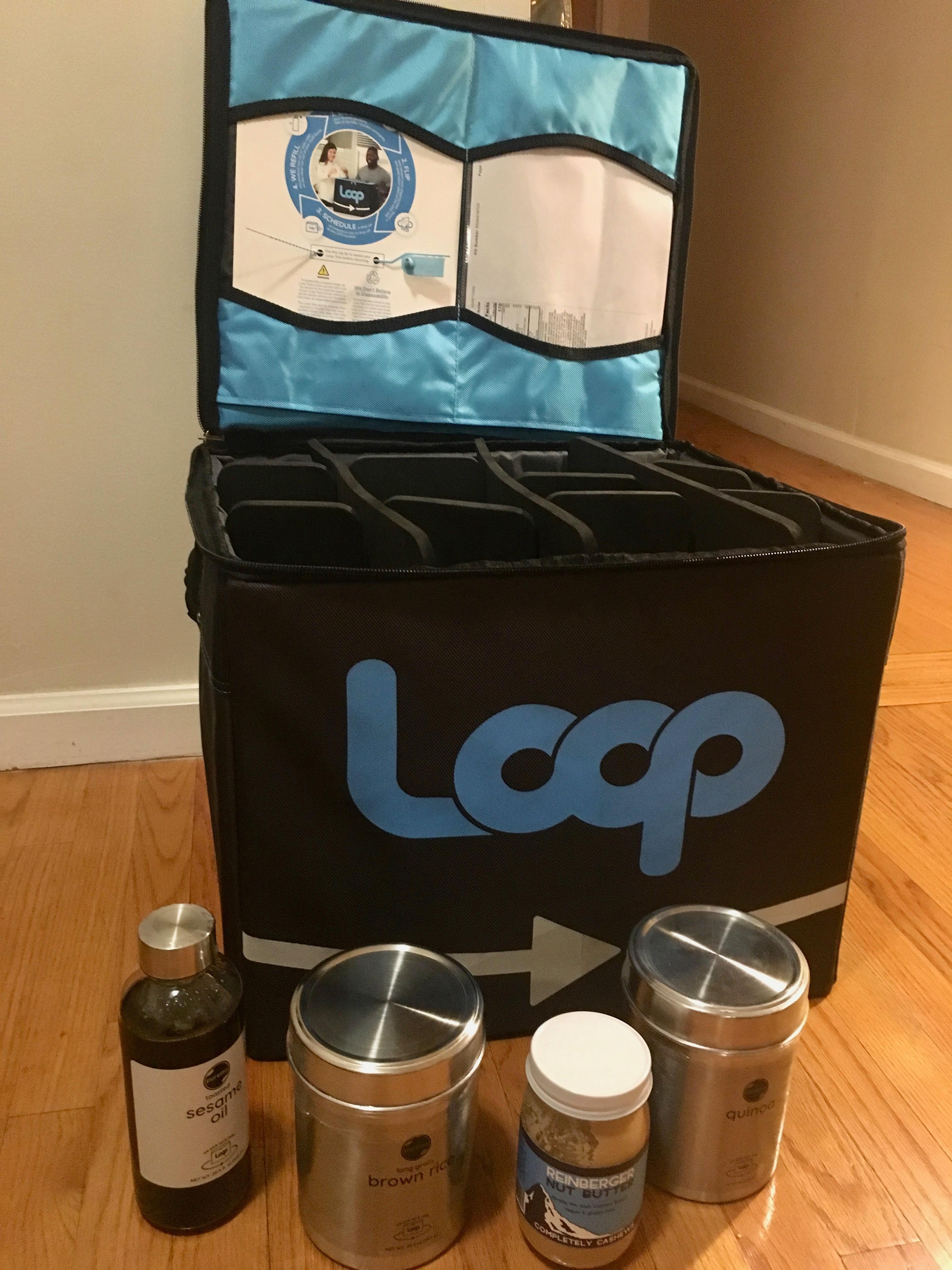
Here’s the breakdown of what I ordered:
Quinoa: 22 ounces, $7 for product, $3 deposit for metal container
Long Grain Brown Rice: 35.2 ounces, $5 for product, $3 deposit for metal container
Reinberger Cashew Butter: 16 ounces, $13 for product, $2 deposit for glass jar with metal lid
Toasted Sesame Oil: 20.9 Ounces, $14 for product, $3 deposit for plastic bottle
Those four items ($39), their deposits ($11), and the Loop tote’s deposit ($15) came to a total of $65. Oof. But luckily, when I eventually return the tote and the containers, I’ll get $26 back.
I carried the tote upstairs, and excitedly began investigating. The tote's zippers were sealed with a plastic disposable lock tie for security. And inside the tote was another lock tie for sealing the tote when I refill it with my empty containers and schedule a pickup. There was also a note explaining that I could put the used lock tie back in the tote to be recycled by TerraCycle, but I hope that in the future, Loop comes up with a reusable option to replace the lock tie.
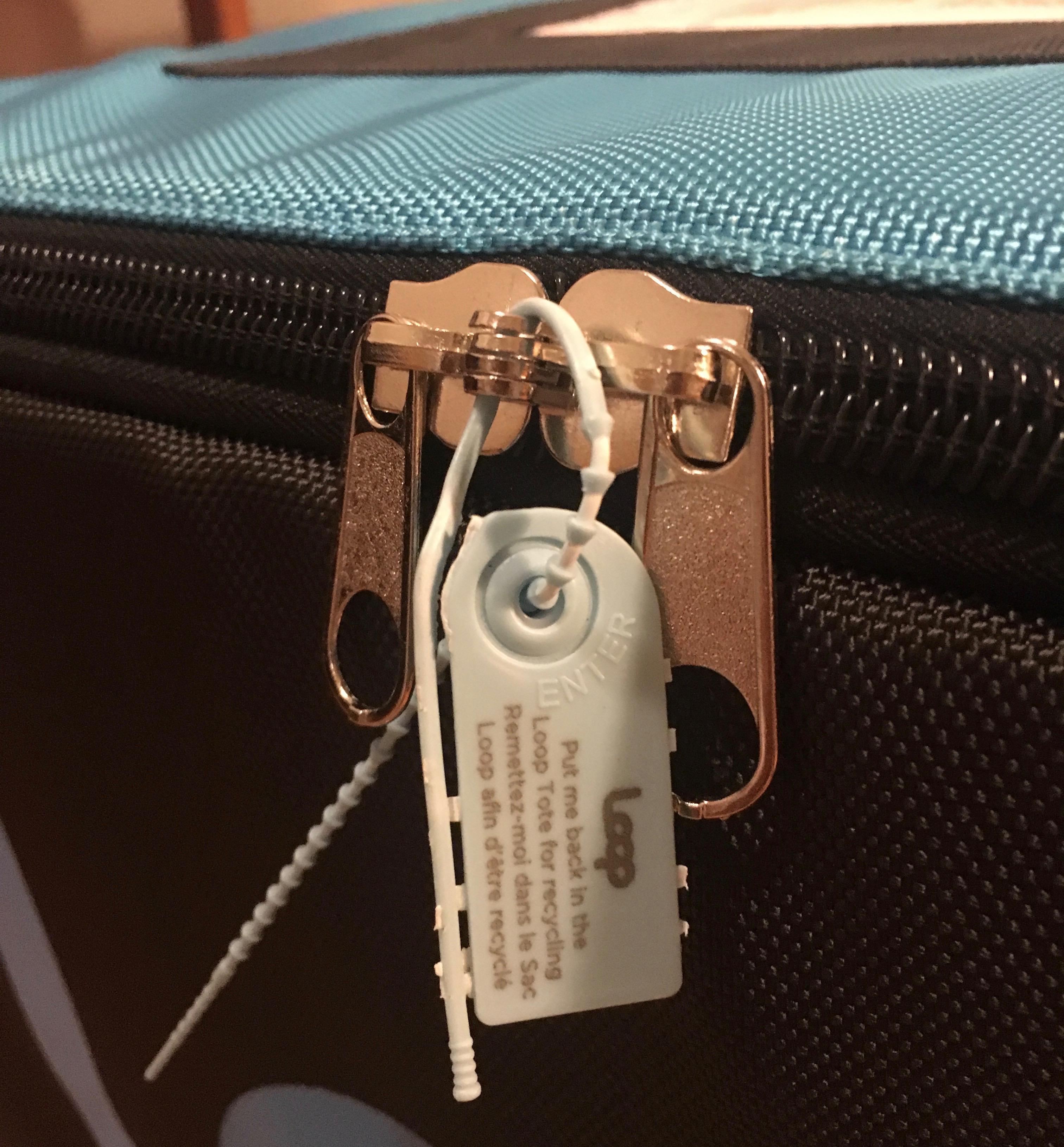
OK, now onto the actual contents. The quinoa and brown rice, both made by Loop's in-house brand Puretto and packaged in metal canisters, are pantry staples for me. I typically buy them both from the bulk section at Whole Foods or a smaller natural foods store. I bring my own jars or bulk bags, keeping the process as zero waste and plastic-free as possible, and I’m lucky enough to be able to walk to stores with bulk sections. So when I pulled out the shiny metal canisters, I was disappointed to see that they were sealed with plastic shrink wrap.
The toasted sesame oil, also made by Puretto, was in a plastic bottle — and it was also sealed with a bit of plastic shrink wrap. The cashew butter, made by Reinberger, came in a glass jar with a metal lid, and it was the only item packed without any single-use plastic.
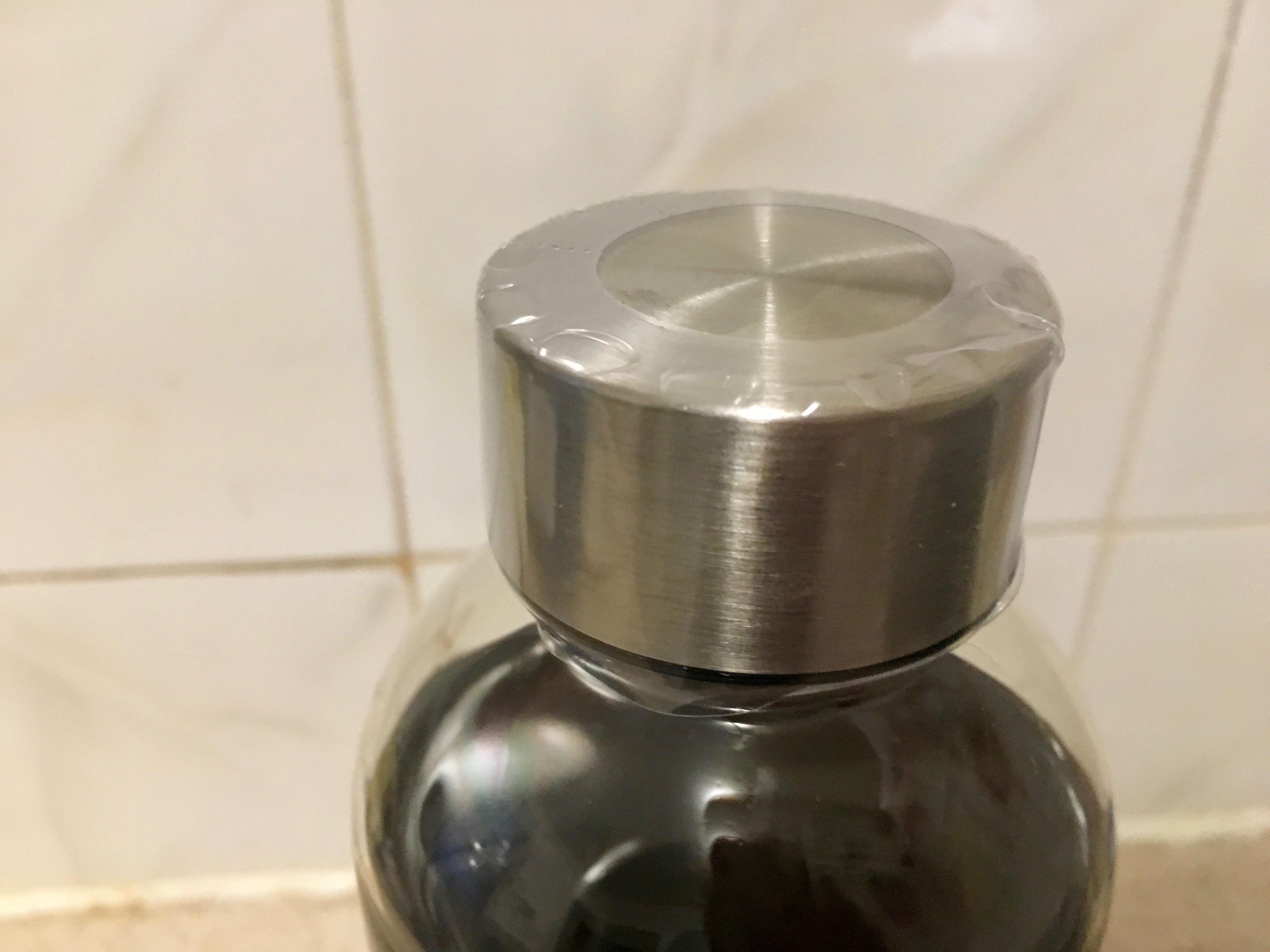
Loop encourages customers to put the plastic wrap back in the tote to be recycled, since they cannot be recycled curbside. But if the tote is sealed with a lock tie, why do the individual food items need to be sealed with single-use plastic as well? And if the cashew butter didn’t need plastic shrink wrap, why did the three other items need it?
When I spoke with Rossi, he waxed poetic about the importance of reuse over recycling — so it was a bit surprising to see single-use shrink wrap and lock ties in my order. I would imagine that these were the best option that Loop could find, but perhaps in the future, those items will be replaced with reusable alternatives.
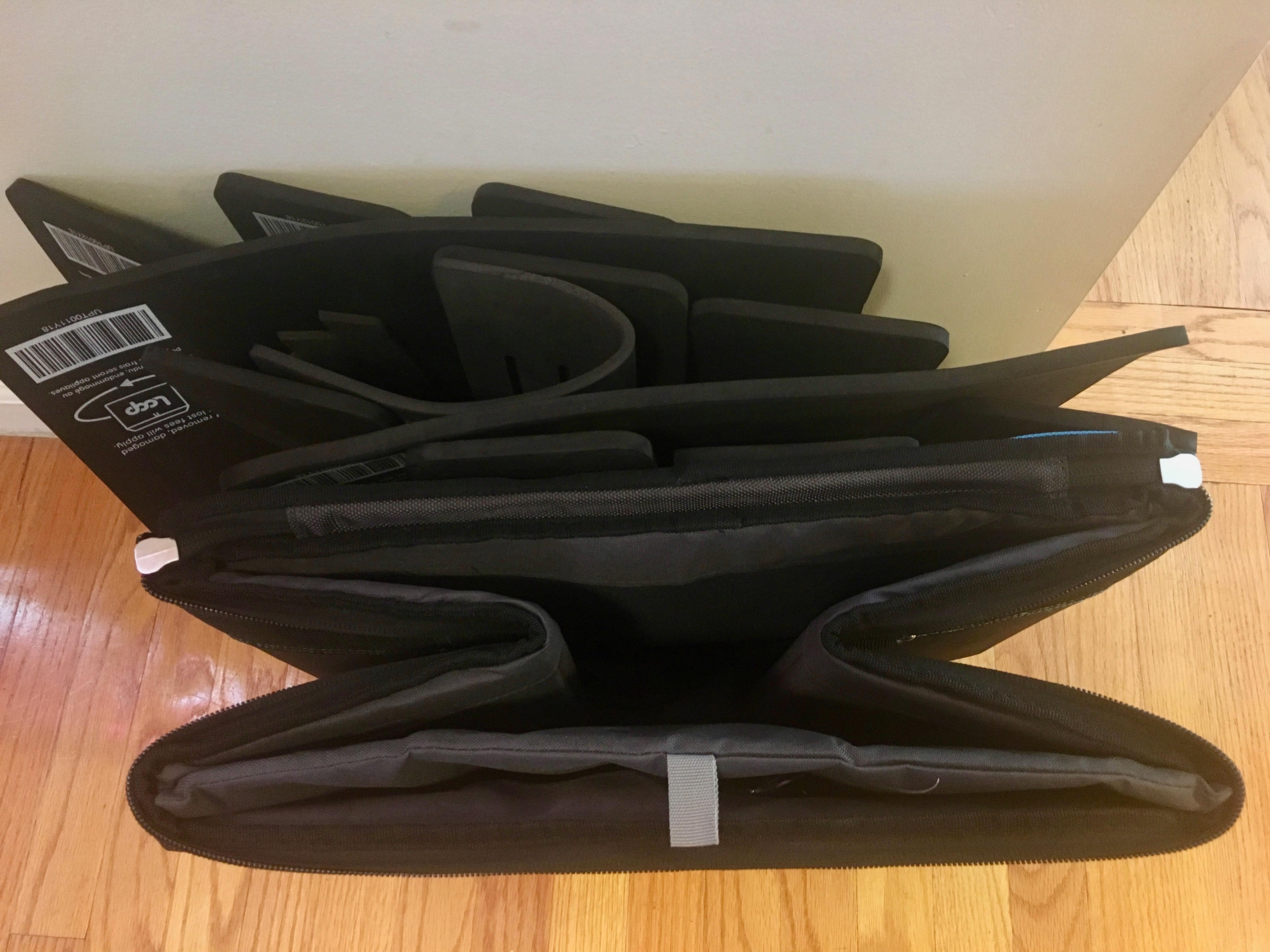
Then, there’s the tote itself. Even though it does fold up, it doesn’t necessarily fold flat. Plus, there’s so much foam padding inside the tote (enough to safely toss around 16 wine bottles) that needs to be taken out before breaking the tote down. And unlike the relaxed suburban woman in the video that plays on a loop (ha, ha) on Loop’s website, I do not have an empty cabinet in my tiny kitchen to fit the folded tote and all the foam contents. So instead, my roommate and I will be using it as a storage ottoman until I’m ready to schedule my tote for pickup. I’m not joking.
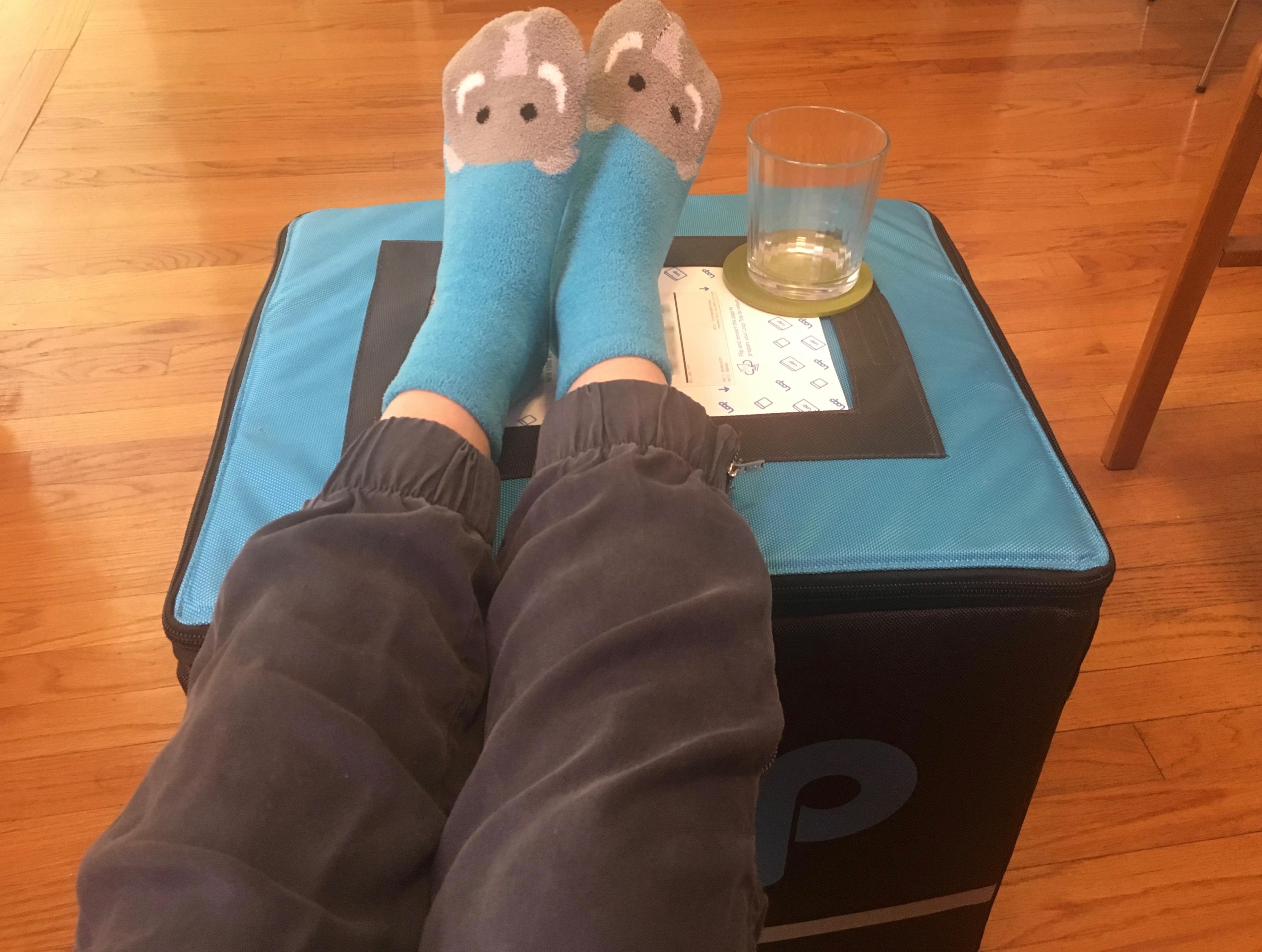
There were also plenty of things Loop did that really impressed me. I liked that the mailing label was reversible — the label that I’ll need when I schedule the tote for pickup was on the back of the mailing label, reducing a piece of paper. For some reason, the cashew butter did not have nutrition facts listed on the jar, so Loop printed that out and laminated the paper, so that it can be reused for future cashew butter customers. I also liked that the tote, which seems durable and should last for many mailings, had handles, making it much easier to carry upstairs to my fifth-floor apartment.
Plus, all four containers I received look pretty nice in my pantry. As Rossi told me over the phone, Loop is using a combination of glass, metal, and thick plastic. "We are material agnostic, so long as the material is durable, and can be refilled and survive the rigors of the platform," he said.
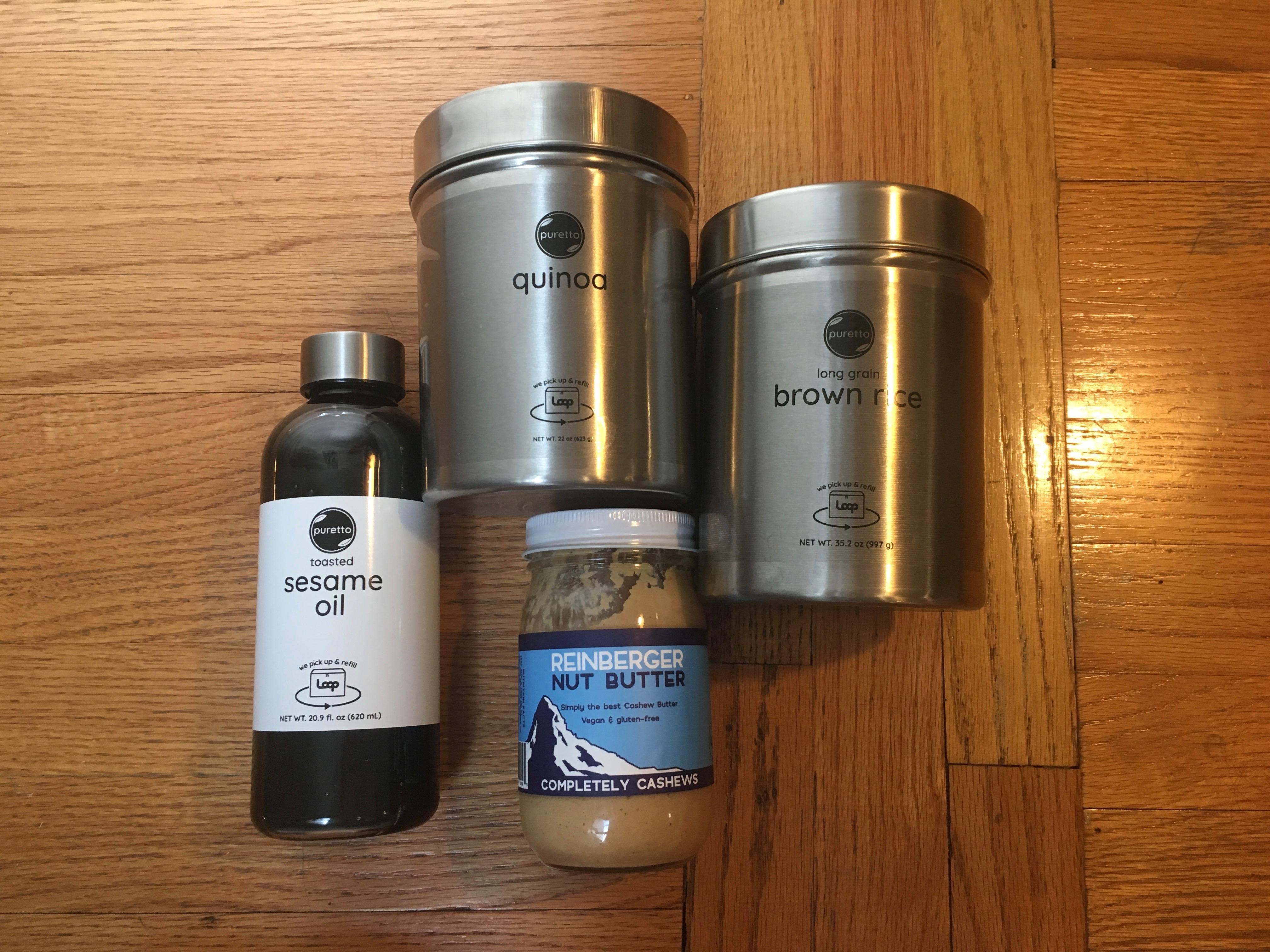
All that being said, as long as the prices and the plastic shrink wrap stay the same, I don’t think I would use Loop again for pantry staples like quinoa and rice, since I can easily get them in my grocery store's bulk section — and for less money. But if you do not have access to those items in bulk, maybe Loop is worth trying out.
For me, I’d only place another order to get goodies that are not typically sold plastic-free, like shampoo, frozen veggie burgers, ice cream, and packaged snacks. Some of those are already available on Loop's website, and many more are scheduled to arrive in the near future. (Sadly, the non-dairy Häagen-Dazs was sold out when I placed my order.)
TL;DR:
I’d recommend ordering from Loop soon if you:
I’d recommend waiting to order from Loop until the platform grows more if you:
Even though I have a few critiques for Loop, I know that this was the platform’s first round of orders, so things aren’t perfect yet. I’m confident that as Loop grows, the product range will increase and prices will decrease. The high prices do exclude a lot of people, and could give the impression that living a low-waste lifestyle is only for rich people, which it does not have to be.
Plus, Loop is offering free shipping again for the weekend of May 31, so maybe the company is realizing that in this age of free shipping, a $20 fee is never going to fly. Either way, I love that Loop is normalizing zero-waste shopping, and it will be exciting to see how the company develops.